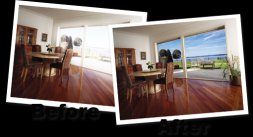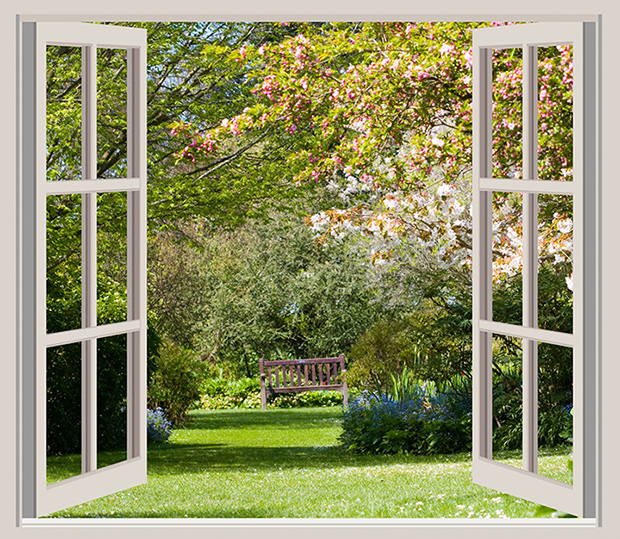The basic principles presented on our pages titled "About Solar Gain, " "Window Selection Guidelines, " and "Q&A on Window Replacement" apply to windows with after-market or retrofit plastic window films as well. The difference is that window films are generally a retrofit option, intended to fix a problem with excessive solar heat gain and/or solar glare from an existing window while window coatings are generally applied in a glass factory, usually in a large vacuum chamber.
In the past, and in many cases still today, after-market films blocked more light than heat. Consequently, if they were dark enough to protect an interior from strong direct solar radiation, they also tended to make the room rather dim in appearance. With such films, the visible transmittance (VT) value was lower than the solar heat gain coefficient (SHGC), opposite from what is wanted in most U. S. climates. In worst cases, the window was so dark that you had to turn the electric lights on in the daytime to see properly, and you still had to suffer the consequences of excessive heat gain! Such films are still available, but should seldom be used in hot climates. Be careful to avoid them when you can.
The old-technology films are characterized by accomplishing their solar heat gain rejection through absorbing the whole solar spectrum, preventing its direct entry into the home. The problem is that the film heats up a lot and, when applied to a single pane of glass or the inner pane of a double pane window, most of their heat is conducted, radiated, and convected to the interior of the building, making the room hotter than it should be. This defeats the purpose of the film, to reduce solar heat gain, because much of the incident solar heat still enters the room. Less light is admitted as well.
Furthermore, many double pane window manufacturers void their warranties if the homeowner puts a window film on their product. One reason for this is that when the film gets hot, it makes the pane it is affixed to get hot as well. The glass expands, and expands more than the outer glass without the film. This difference in expansion can create stresses in the window which in worst cases can cause the window to break, through no fault of the window. If you wish to apply window film to a double pane window, make sure the window manufacturer will continue to back the window warranty.
Modern, High-Performance Window Films
To avoid the unfortunate consequences of excessive solar heat gain, window film manufacturers have been working to develop modern products which block more heat than light, doing it by reflection of the unwanted infrared radiation contained in the solar rays, while still admitting adequate amounts of visible light, necessary to see the outside, and to provide good daylight illumination of the interior.
In order to get the right kind of window film for your window, look for the Visible Transmittance (VT) value for the film when applied to a single pane of clear glass. Then find the Solar Heat Gain Coefficient (SHGC) for the combination. If the VT value is greater than the SHGC value, you have the right kind of film for a hot climate window, but be sure to check the window manufacturer's warranty before applying the film.
The Light-to-Solar-Gain (LSG) ratio is the VT value divided by the SHGC value. The higher this ratio, the more spectrally selective the film and the better it is for hot climates. It is difficult, however, to achieve LSG values greater than about 1.2 with window films. Soft multi layer coatings inside double pane windows, however, can achieve values as great as 1.6, providing good transmission of visible light (no dark appearance) as well as good solar heat gain rejection. In order to achieve good solar heat rejection with either a window coating or an applied window film, the SHGC value needs to be low (below approximately 0.3 to 0.5) to be effective—the lower the better. With an LSG ratio of only 1.1, for example, this means that the visible transmittance (VT) value will be about 0.33 to 0.55. Low values in this range can impart a dark appearance to the glass and may be objectionable. For sunrooms with vast expanses of glass exposed to the direct sun for much of the day, however, values as low as 0.3 to 0.4 for the VT should not be objectionable, especially since these values can produce SHGC values below 0.3 to 0.4 with window films having LSG values greater than 1.0.









